Whilst it may not be regarded as one of Europe’s most powerful leagues, the Turkish Süper Lig is once again providing fans with some compelling storylines.
Whether it was the fierce clash of Istanbul’s two remaining undefeated powerhouses on Monday or even the emergence of Samsunspor as an early challenger to Türkiye’s elite, there is no absence of drama or excitement.
But the story that captivated over the summer transfer window would have to be Victor Osimhen‘s surprise transfer to Galatasaray, a move that perplexed football fans worldwide.
Having burnt his bridges at Napoli, the footballing world expected Osimhen to finally make his move to one of the world’s elite.
However, significant interest from both Chelsea and PSG ultimately did not materialise late into the window.
Despite the swirling rumours of a mid-season break clause in Osimhen’s contract, his eventual loan move to Galatasaray represented an opportunity to continue his legacy in Europe whilst continuing to enjoy the challenge of adapting to a new tactical system.
Okan Buruk’s centurions didn’t exactly need much offensive support after an impressive 2023/24 season.
Still, the opportunity to snatch up one of the world’s most prolific strikers would’ve been music to their ears.
Our tactical analysis and scout report will begin to provide some analysis of Osimhen’s accomplished adjustment to life in Türkiye, with particular interest in the elements of his game that have seemed to develop.
It has also been fascinating to see how Buruk has integrated Osimhen into his Galatasaray tactics, already showcasing the Nigerian striker’s talents within different formations and tactical systems.
Okan Buruk’s Tactical Tweaks
After domestic success in 2023/24, Okan Buruk’s tactics needed to adapt to continue outlasting his opponents, especially considering the arrival of the new Fenerbahçe boss, José Mourinho.
Despite Victor Osimhen’s early acclimatisation period, it has been refreshing to witness how Buruk has been able to extract the best out of his new striker while experimenting with different formations.
Victor Osimhen Shots Map
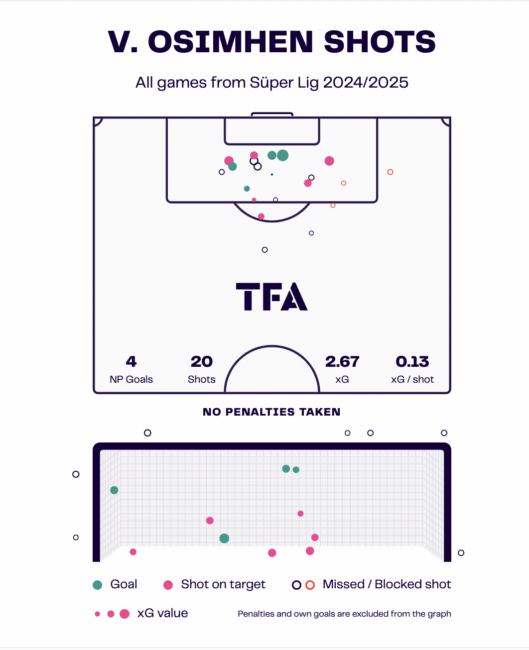
The first was on display against PAOK in the Europa League, with Galatasaray forming up in the 4-2-3-1 formation that has treated them so well under Buruk’s reign.
It allowed Victor Osimhen style of play to adopt the role of the key focal point within the Gala attack, supported by the dynamic movement and creative talents of Dries Mertens, positioned just behind him in the No.10 role.
When analysing Osimhen’s playing style across his career, he has grown into a fierce goalscorer who can lean on his athletic prowess to create space and overwhelm opposing defenders.
He makes up for his limited chance creation with predatory striker’s instincts in front of goal.
Over the last 365 days, we have seen a massive contrast between Osimhen’s ability to engage directly in his team’s ball progression and his effectiveness when he finally does get the ball at his feet.
This can be displayed through his average touches per match last season, which ranked within the sixth percentile across Europe’s top five leagues (24.88 per 90) — a wildly different figure from the 6.63 touches per 90 in the opposition’s box which had him ranked alongside superstars like Kylian Mbappé (92nd percentile).
Therefore, Okan Buruk knows that his overarching attack strategy must revolve around Galatasaray’s ability to create space for Osimhen to remain isolated against an opposition defender—or, better yet, free reign to use his pace in behind.
We saw glimpses of this against PAOK, with Gala looking to overload the left half-space with the attacking positioning of left-back Ismail Jakobs, supported by Gabriel Sara’s run.
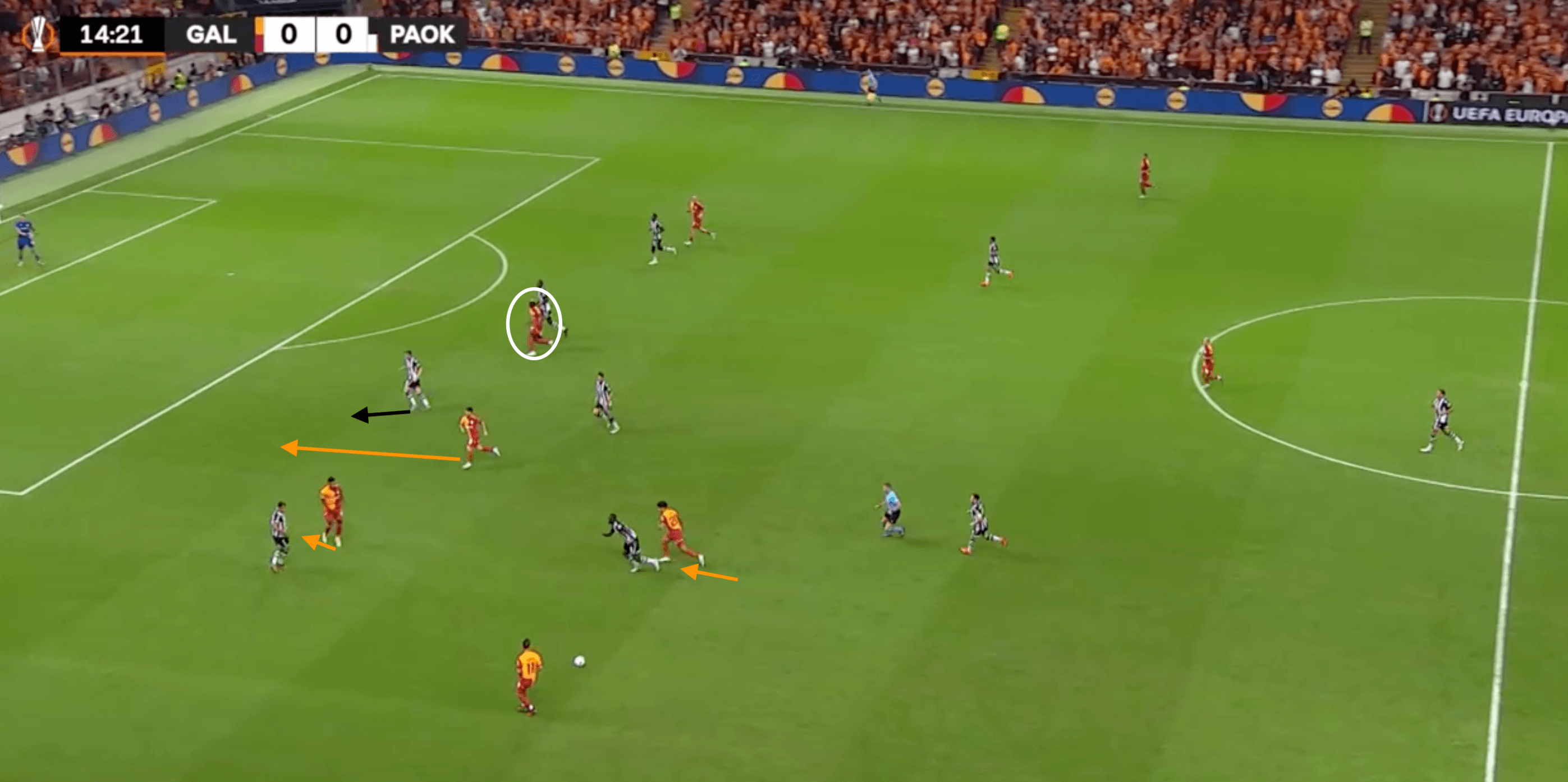
The key for Galatasaray was the dart from Mertens through the channel, as it aimed to unsettle the defensive positioning of PAOK’s right central defender, drawing him away from any potential 2v1 on Osimhen through the centre.
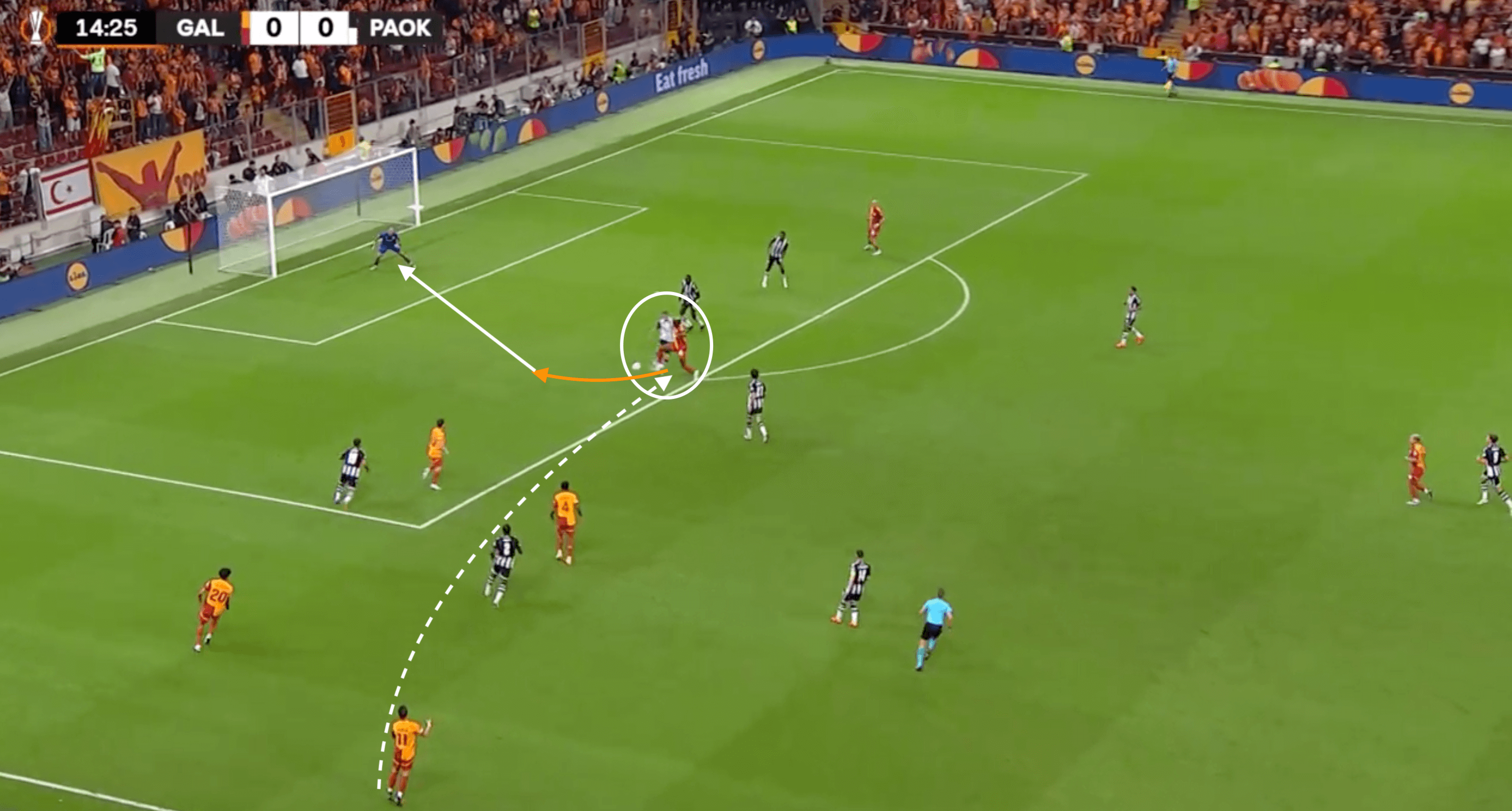
Galatasaray’s resulting attacking sequence culminated in Osimhen exploiting the defensive uncertainty to get an early step and meet Akgün’s perfectly weighted cross in stride, providing a crucial extra yard of space to strike on goal uncontested.
Whilst this was a scoreless night for Osimhen, he remained engaged in his side’s desire to supply him with crosses into the penalty area, with Gala continuing to make use of their dominance on the left flank with their flying full-backs.

Interaction With Mauro Icardi
You may be wondering where the signing of Victor Osimhen has left Turkish Süper Lig 2023/24 top goalscorer Mauro Icardi in the pecking order, but Buruk has found a way for both strikers to operate within a complimentary partnership.
In their recent match against Elfsborg, Buruk opted for a fluid 3-4-1-2 system in which Osimhen and Icardi worked in tandem throughout the match.
The formation featured the wingbacks of Yilmaz and Akgün advancing along the flanks, almost in line with Osimhen, to maintain their team’s attacking width.
From this, we can see Mertens dropping deeper to help both Sara and Torreira with ball circulation within the midfield, along with Icardi’s movement to drop between the lines and offer another critical dynamic to their attack.
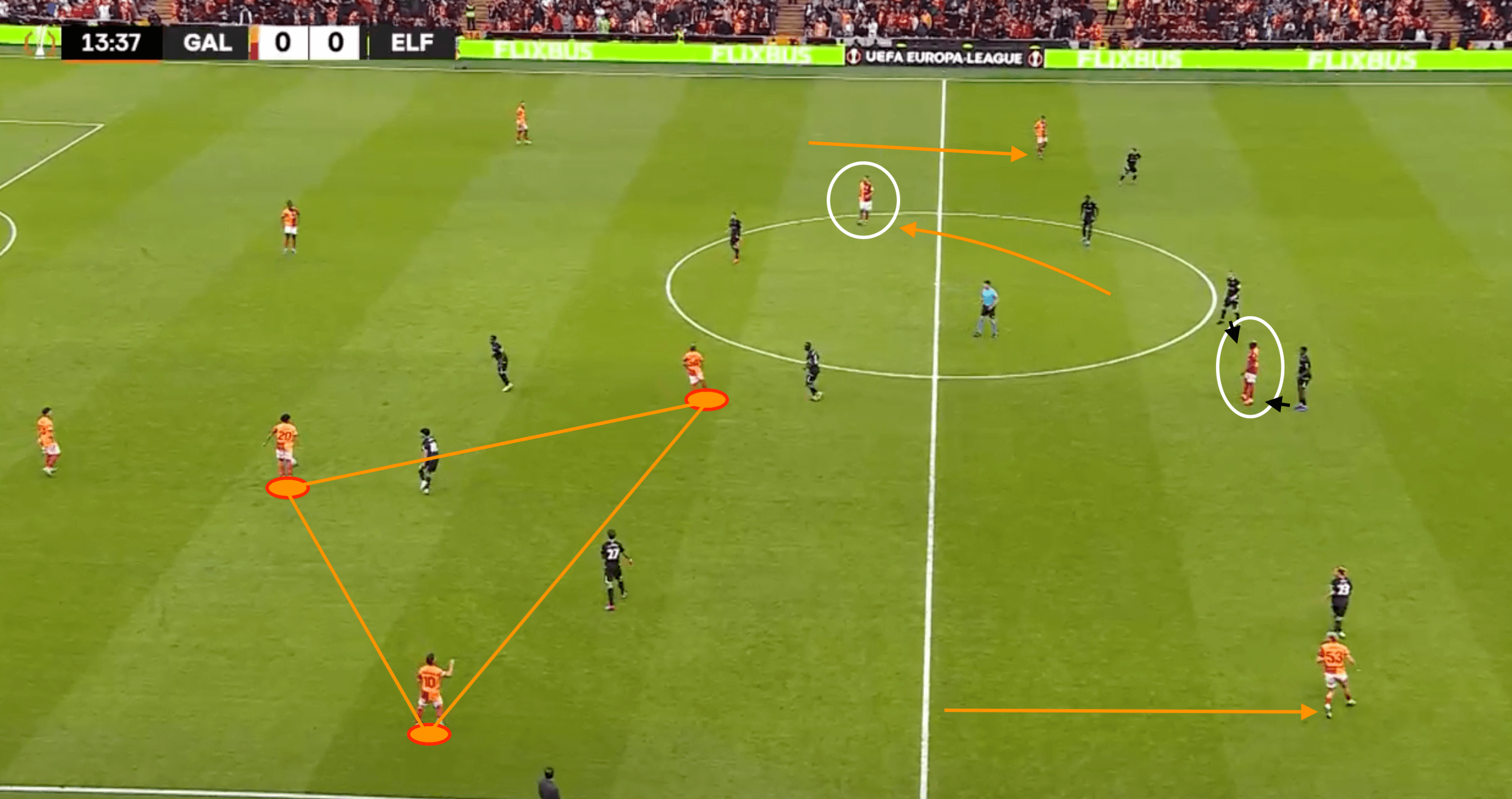
When Icardi was able to pick up possession within those areas, Galatasaray were inherently threatening in transition.
Osimhen was often the recipient of an early ball, where he could showcase his excellent hold-up play.
He found the unmarked run of Mertens in the vacated zone out wide.
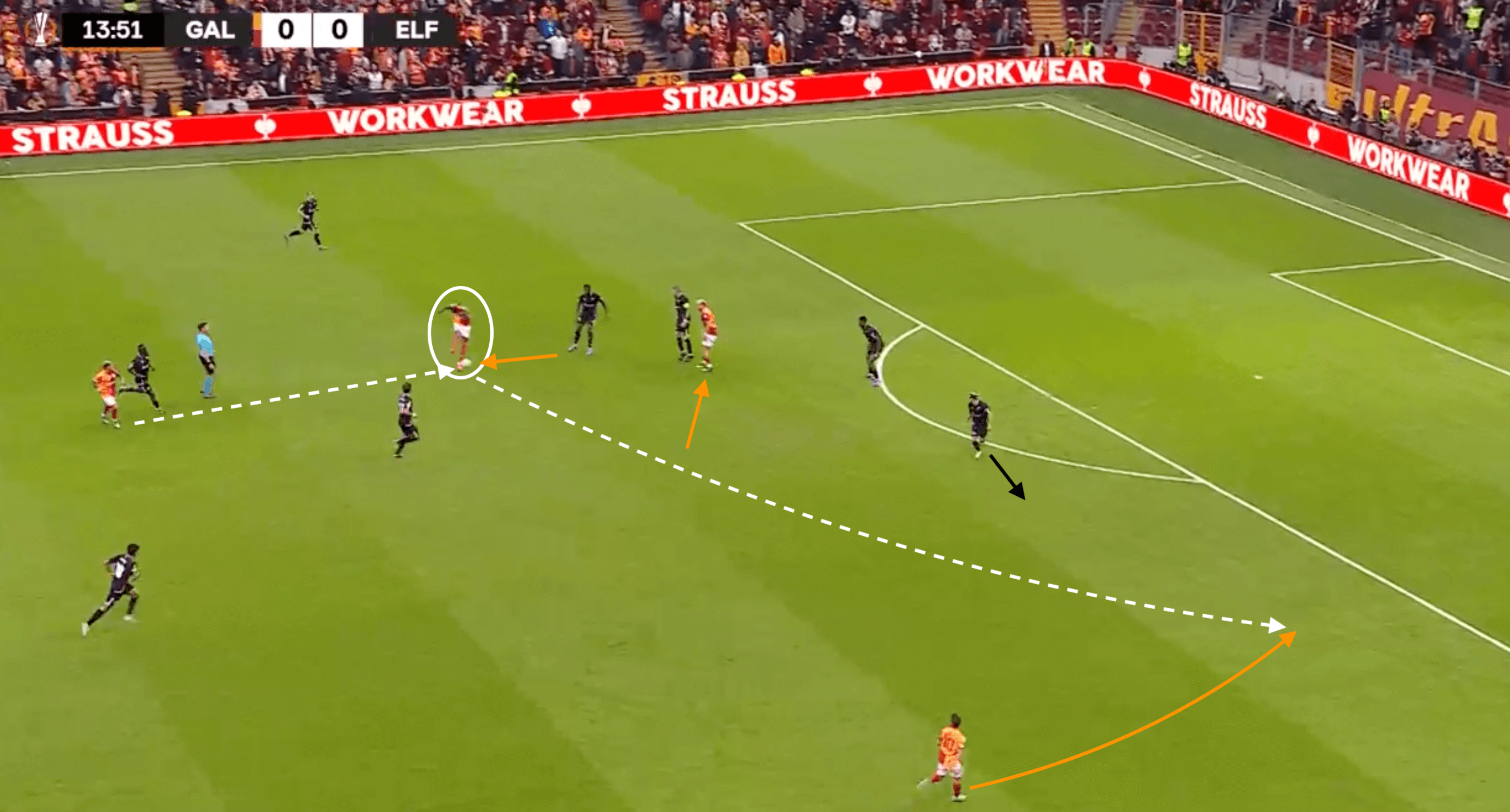
It typifies the reasons why Galatasaray’s attack can appear so overwhelming, resulting from their fluid positioning and threat from various angles.
Icardi was able to emulate Mertens’ wider positioning later in the match, with the intention of providing a fast-moving attacking sequence to pick out the run of Mertens through the right half-space this time — once again providing Osimhen with a favourable 1v1 matchup with the other central defender drawn out.
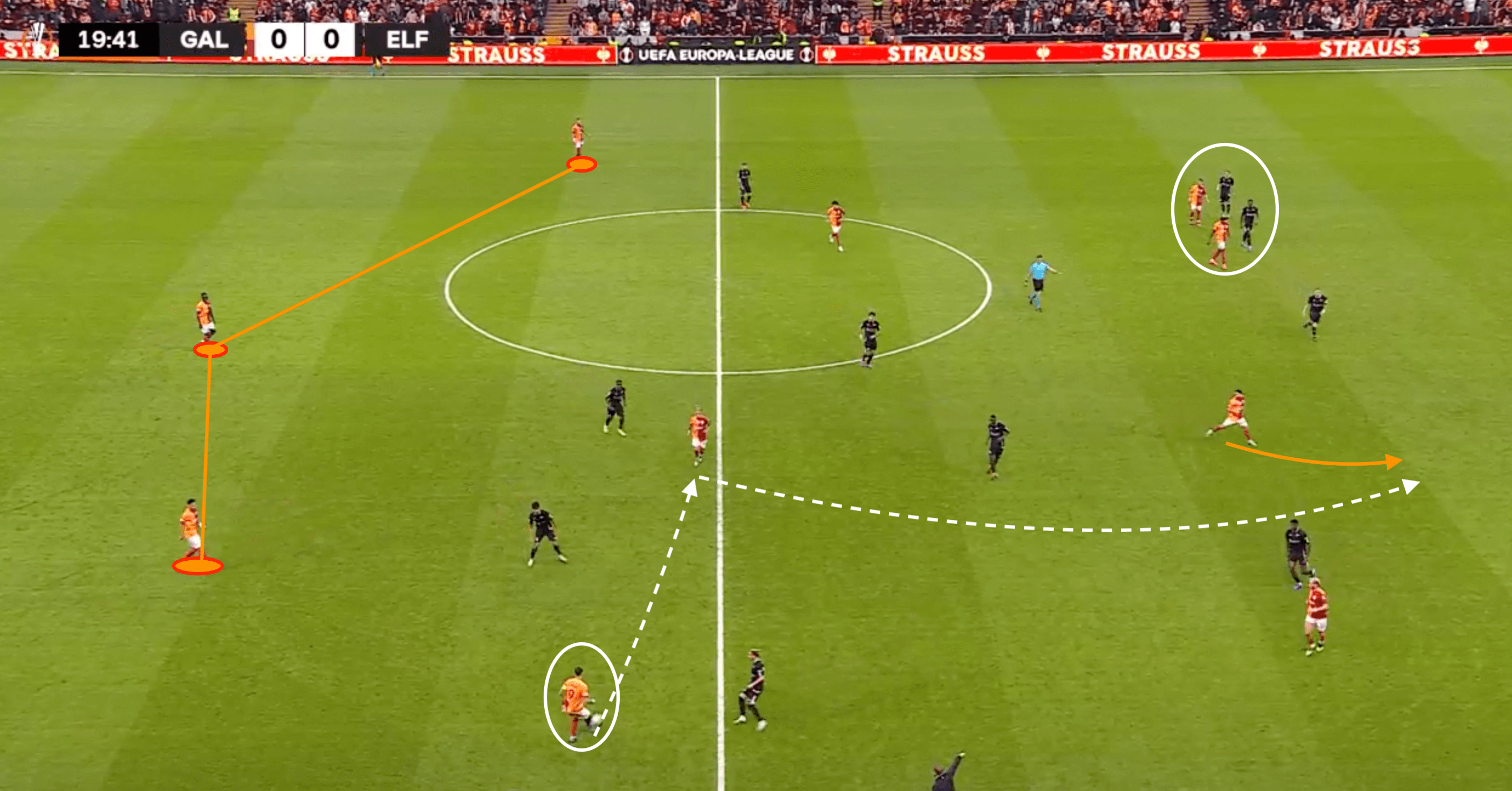
Although the use of Icardi as a deeper-lying forward may seem obscure, the Argentinian performed very well in crucial creative metrics such as key passes (1.74 per 90), passes into the final third (1.59 per 90) and assists (0.43 per 90) over the past season.
Therefore, it is no surprise that Icardi has been able to directly boost Victor Osimhen’s attacking threat when dropping between the lines, picking up pockets of space to allow the Nigerian striker to test the verticality of opposition defences with his movement in behind.
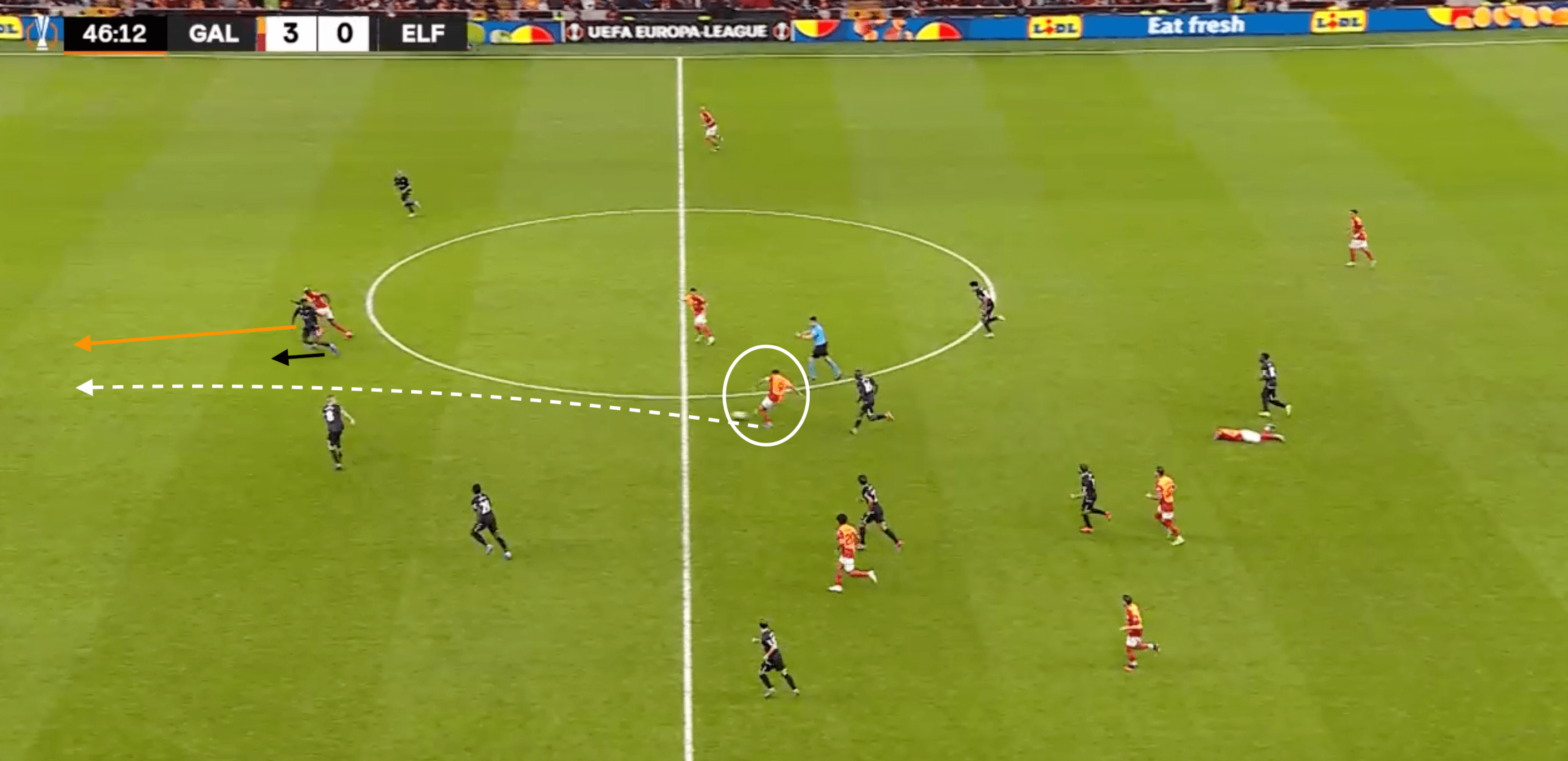
When analysing the attacking coordination of Osimhen and Icardi thus far, Icardi’s off-the-ball movement, acting almost as a decoy, has been the most consistent factor in Osimhen’s success.
This method has also been shown to be applicable across different formations.
Osimhen’s goalscoring has profited directly from situations like these, where we see Icardi retreating to a more central position, which provides Osimhen with the space to convert in front of the goal.
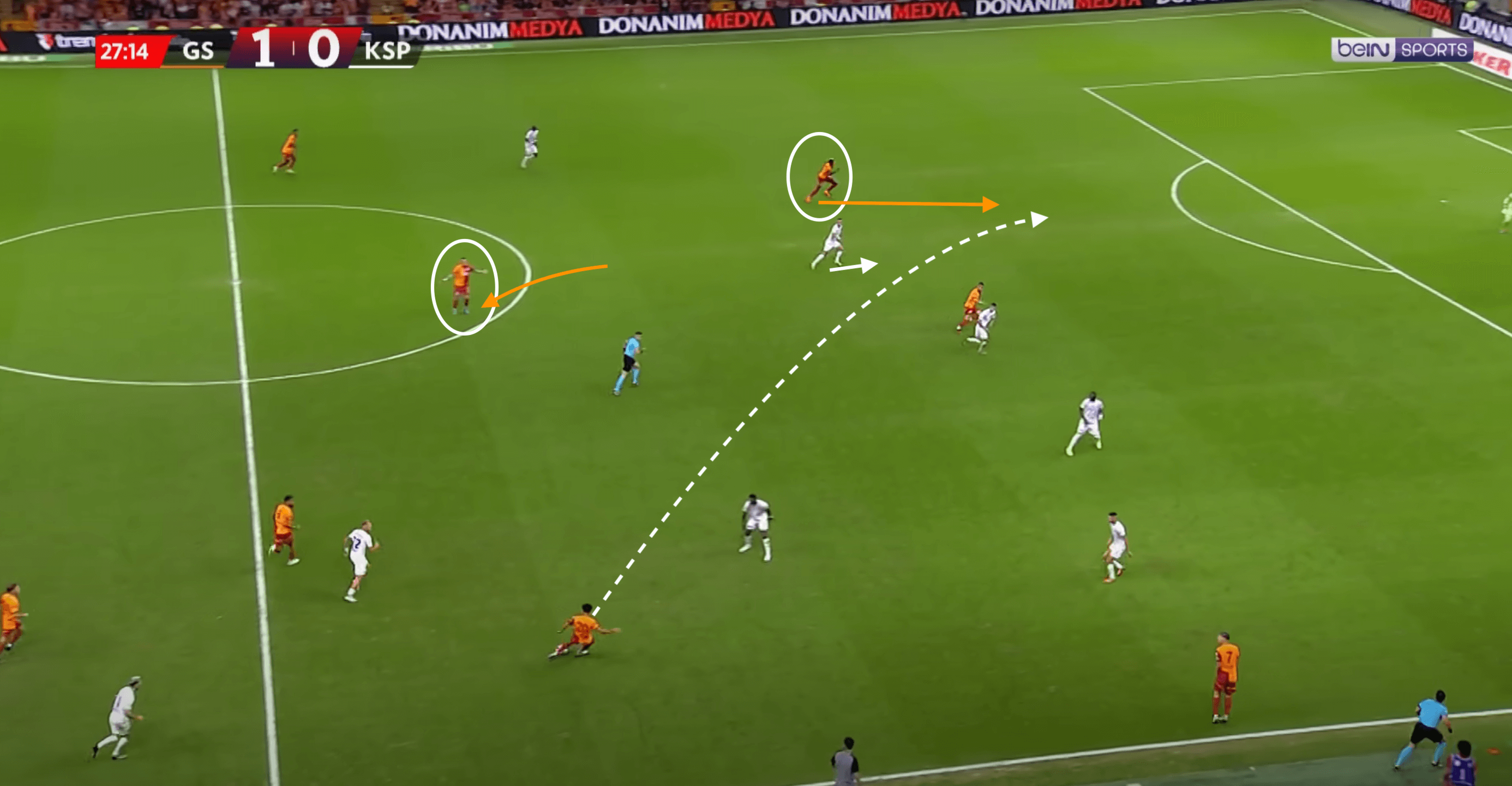
Penalty Area IQ
Victor Osimhen’s play within the penalty area has become synonymous with the ‘fox in the box’ style that allows elite strikers to be so effective in front of goal.
But with that in mind, his chance creation and technical abilities to combine with teammates have often stopped him from matching the heights of a multi-faceted striker like Harry Kane.
It was always an area which Osimhen could still develop.
At the age of 25, his move to Türkiye has allowed him to place more emphasis on his ability to provide attacking opportunities for teammates—especially considering his seven-goal contributions in as many matches for Galatasaray.
Many doubters had suggested that for all of Osimhen’s attacking excellence, he was clumsy in his overall technical play and failed to bring others into play, but Osimhen contradicted these statements in Galatasaray’s biggest game of the season.
When facing José Mourinho’s Fenerbahće, Galatasaray emulated the attacking movement we referenced earlier in the article when playing in the 4-2-3-1, but this time, there was a crucial difference.
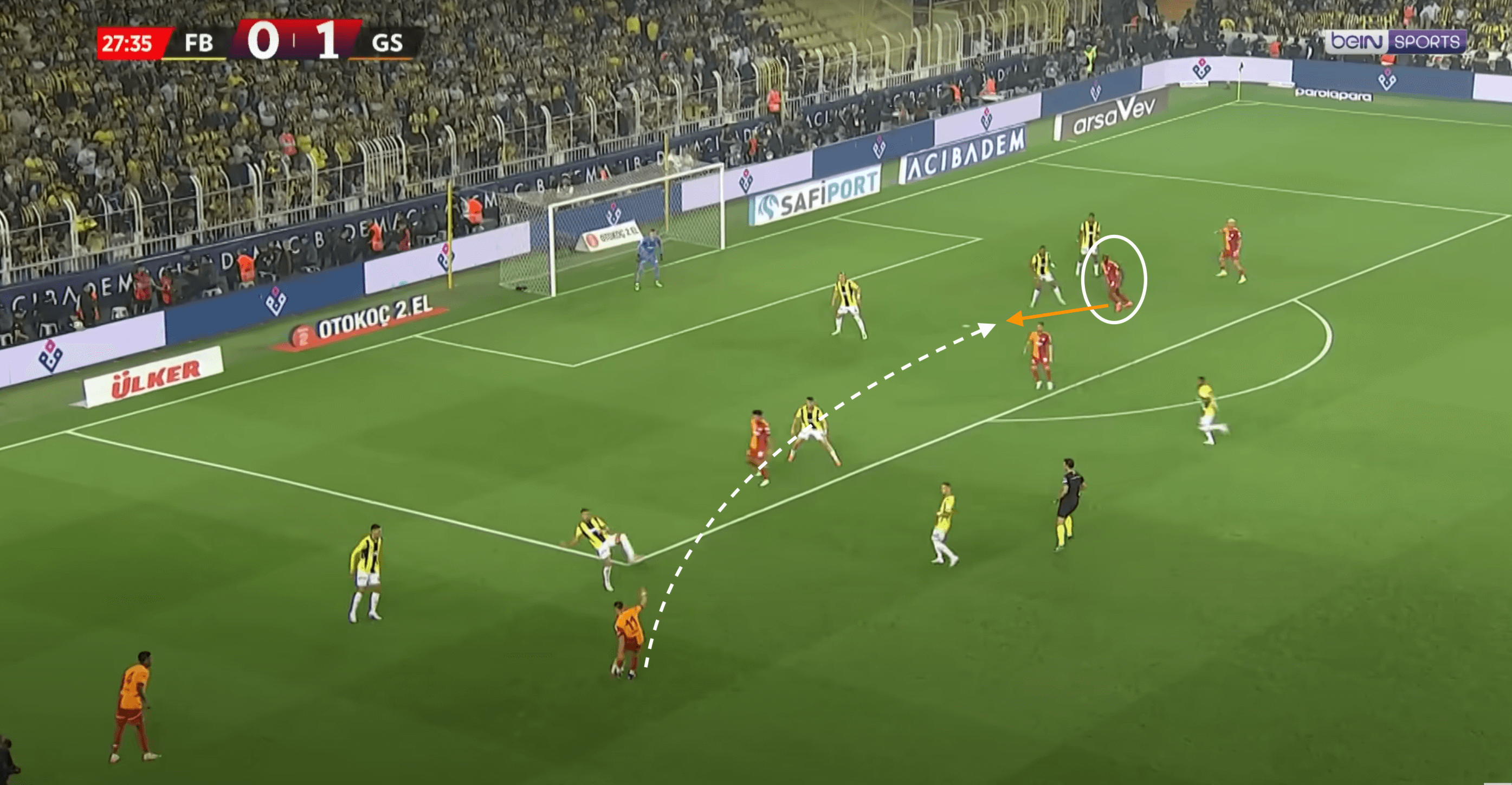
Playing within much closer proximity to Mertens, Osimhen was able to receive the cross and cushion a deft chested pass into the path of the onrushing Belgian, who smashed the ball home to double his side’s advantage.
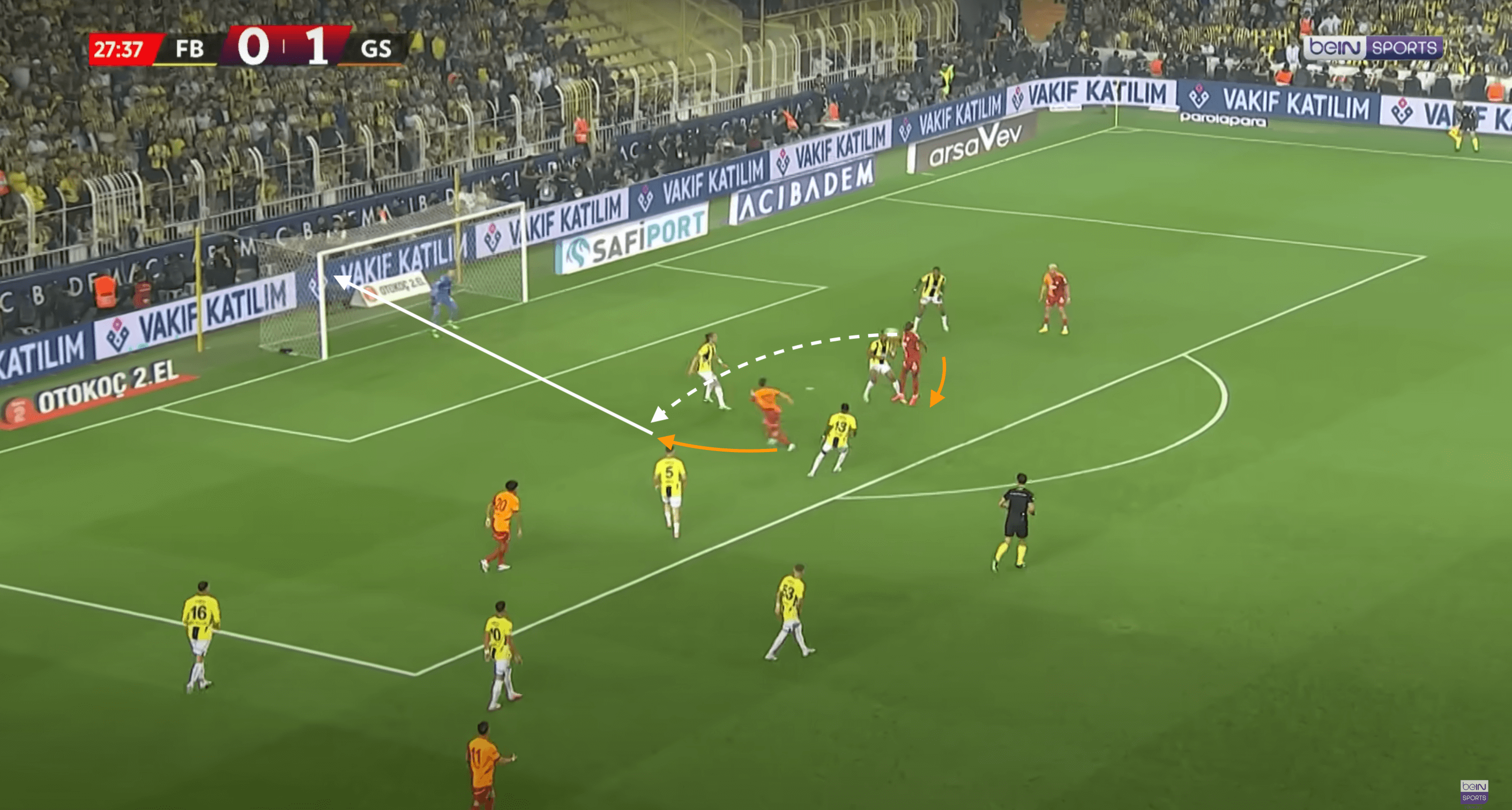
This has been a promising trend for Galatasaray and Osimhen this season, and it was also on display against PAOK.
The Nigerian striker was able to redirect a deep cross back across the penalty area to allow an unmarked Yunus Akgün to grab the crucial go-ahead goal.
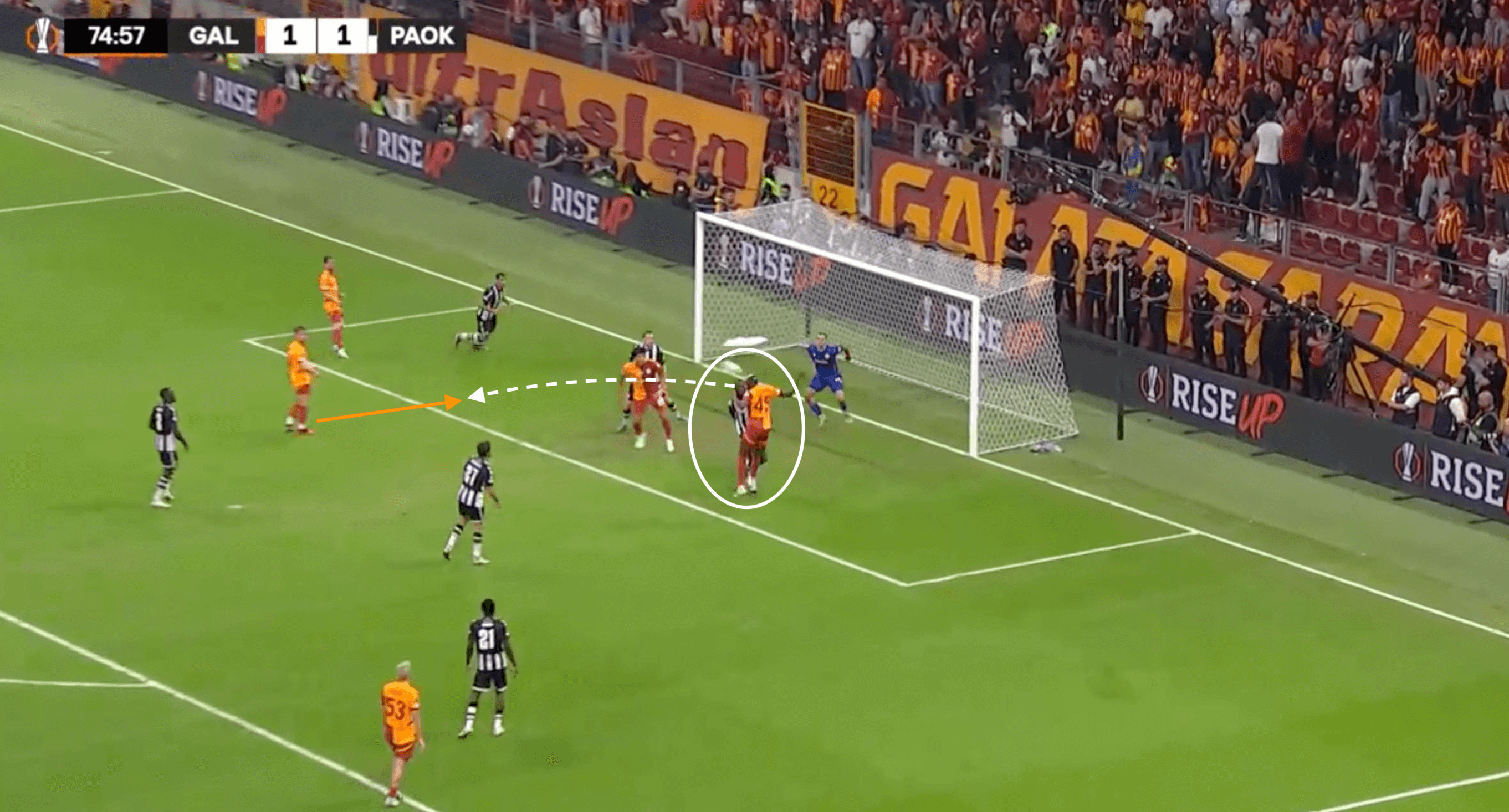
Instances like these would indicate an evolving level of maturity and attacking intelligence from Victor Osimhen, as he can recognise the most efficient passing options by sacrificing personal glory for the betterment of his new team.
The decision not to attempt a headed effort on goal shouldn’t be used as a negative aspect to question Osimhen’s attacking desire but should instead be applauded as a significant development in his all-round offensive arsenal.
Conclusion
Even though it is only a loan move, we are beginning to realise why Victor Osimhen’s signing has been one of the most influential transfers in Turkish footballing history.
It may have represented a step down in footballing quality for Osimhen at the time, but we now can appreciate that his transfer has provided the opportunity to embed himself within a new footballing culture while learning from an equally ambitious and tactically savvy manager in Okan Buruk.
Osimhen has matched himself to an attack-minded, transition-heavy outfit, allowing him to showcase his key strengths.
The early discussions between Buruk and Osimhen were a massive factor in the Nigerian’s decision to facilitate the loan move to Türkiye.
We are already seeing that despite an obvious gulf in class between Osimhen and opposing defenders, he can still pursue personal footballing development as he approaches his prime.
All eyes will be on next week’s UEFA Europa League encounter against Tottenham.
Hopefully, we will see Buruk fashion up a dynamic attacking game plan to try and break down Ange Postecoglou’s side.

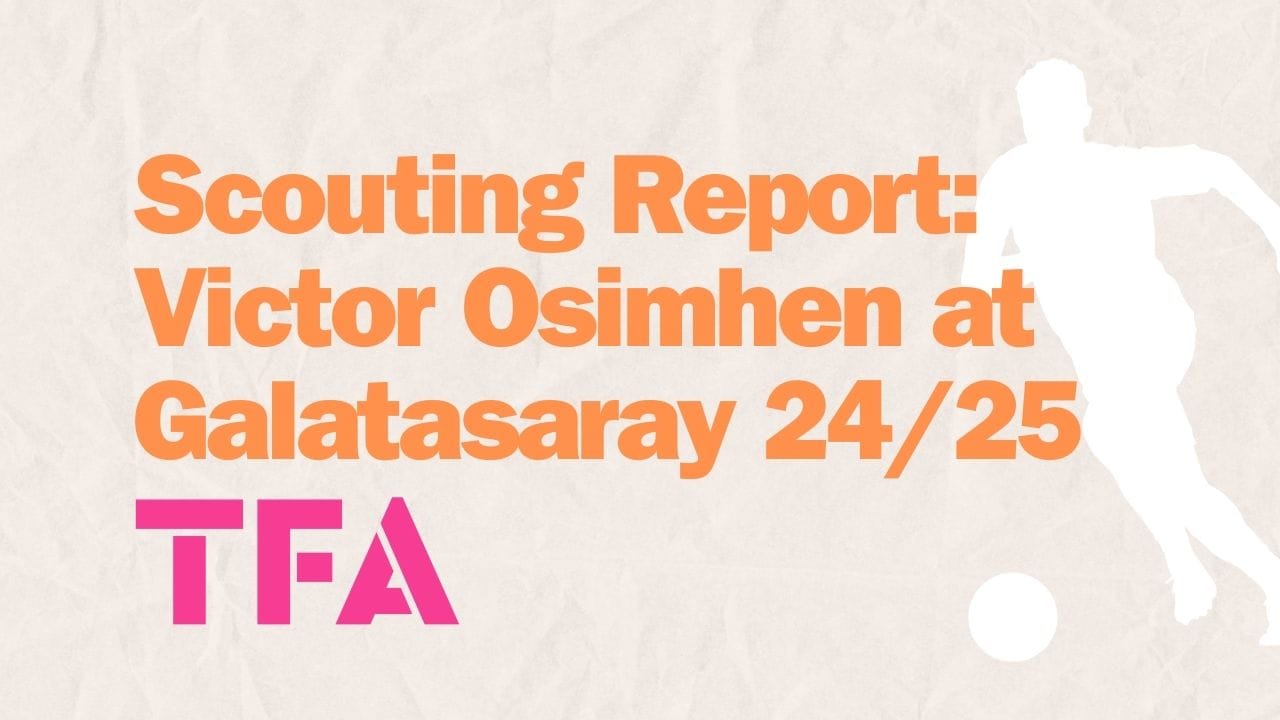



Comments